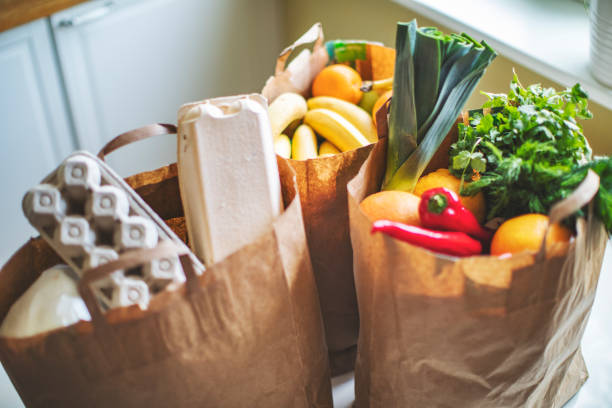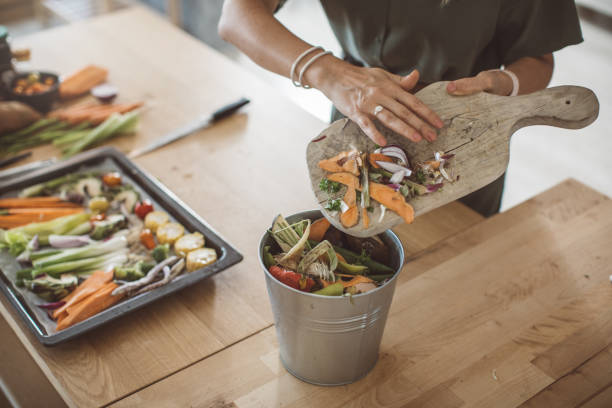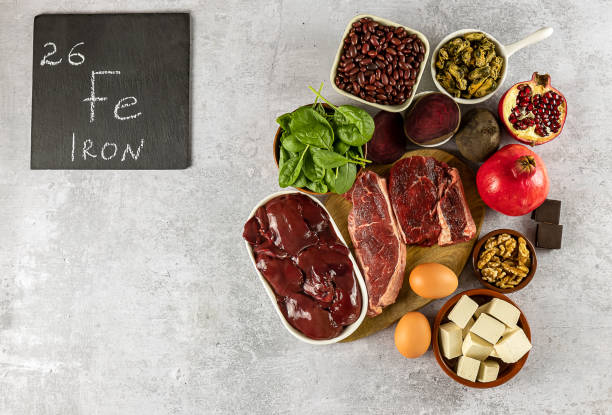Are you tired of constantly scrambling to decide what to eat, only to end up with unhealthy or wasteful choices? Crafting a sustainable meal plan can revolutionize your approach to food by saving you time, reducing waste, and nourishing your body with balanced nutrition. In this guide, we’ll break down how to build a sustainable meal plan that fits your lifestyle, respects the environment, and supports your health goals.
Understanding a Sustainable Meal Plan
A sustainable meal plan isn’t just about eating organic or plant-based foods—although those can be important components. It’s about making deliberate choices that benefit your well-being and reduce your environmental footprint. Here’s what it means:

- Balanced Nutrition: Focusing on a variety of whole foods to provide a well-rounded mix of macronutrients (proteins, fats, carbohydrates) and micronutrients (vitamins and minerals).
- Waste Reduction: Planning meals that minimize food waste by using leftovers creatively and buying only what you need.
- Seasonal Eating: Incorporating seasonal produce which is often fresher, more affordable, and has a lower environmental impact.
- Mindful Sourcing: Choosing locally produced and ethically sourced foods whenever possible.
By building a sustainable meal plan, you’re investing in long-term health benefits while also contributing to a healthier planet.
Steps to Build Your Sustainable Meal Plan
Developing a sustainable meal plan may seem daunting at first, but breaking it down into actionable steps can simplify the process.
1. Set Clear Goals and Assess Your Needs
Before diving into recipes and grocery lists, consider what you want to achieve with your meal plan. Do you want to improve your overall health, manage your weight, or reduce food waste? Understanding your goals will shape your planning process.
- Define Your Objectives: Write down your goals—whether it’s boosting energy, supporting muscle growth, or simply saving money.
- Assess Your Lifestyle: Consider your daily schedule, cooking skills, and how much time you can realistically dedicate to meal preparation.
- Determine Dietary Preferences: Identify any dietary restrictions or preferences, such as vegetarian, vegan, gluten-free, or low-carb.
2. Plan a Weekly Menu
Creating a menu for the week can help streamline grocery shopping and reduce last-minute decisions that may lead to unhealthy choices.
- Start with Breakfast, Lunch, and Dinner: Plan three main meals for each day, leaving room for snacks if needed.
- Mix and Match Ingredients: Choose versatile ingredients that can be used in multiple recipes. This not only saves money but also minimizes waste.
- Include Variety: Ensure your menu includes a balance of protein, healthy fats, and carbohydrates from whole food sources.
Tip: Keep your plan flexible. It’s okay to swap meals around if your schedule changes, as long as you maintain the overall balance.
3. Create a Detailed Grocery List
Once your menu is set, create a grocery list that includes everything you need. This step is crucial for avoiding impulse purchases and minimizing food waste.
- Categorize Your List: Divide items into categories like produce, proteins, dairy, grains, and pantry staples. This makes shopping more efficient.
- Check Your Pantry: Before heading out, take inventory of what you already have to avoid buying duplicates.
- Buy in Bulk When Possible: Purchase non-perishable items in bulk to reduce packaging waste and save money.
4. Prep in Advance
Meal prepping can significantly ease the burden of daily cooking and help you stick to your plan.
- Batch Cook: Prepare large quantities of staples like quinoa, brown rice, or roasted vegetables that can be used in multiple meals.
- Chop and Store: Wash and chop fruits and vegetables ahead of time for quick snacks or easy incorporation into meals.
- Portion Out Snacks: Divide nuts, seeds, or hummus into individual servings to avoid overeating and to ensure convenience.
Prepping on a designated day, such as Sunday, can set you up for a smooth week ahead.
5. Stay Flexible and Adaptable
A sustainable meal plan is meant to serve as a guide, not a strict rulebook. Life happens, and being adaptable is key.
- Allow for Variability: If an ingredient isn’t available or a meal calls for a quick swap, don’t stress—adapt and move forward.
- Monitor Your Progress: Keep a journal or use an app to track how your meal plan is working for you. Adjust portion sizes, recipes, and snack choices based on your energy levels and satisfaction.
- Embrace Leftovers: Repurpose leftovers into new meals. For example, roasted vegetables can be blended into a soup or tossed into a salad the next day.
Benefits of a Sustainable Meal Plan
Implementing a sustainable meal plan can bring several positive changes to your life:
- Improved Health: By focusing on balanced, nutrient-rich foods, you’ll likely see improvements in energy, digestion, and overall well-being.
- Cost Savings: Planning meals and buying only what you need can significantly reduce your grocery bills.
- Reduced Food Waste: A thoughtful meal plan minimizes waste by ensuring that ingredients are used efficiently.
- Environmental Impact: Choosing seasonal, local, and sustainable foods contributes to a lower carbon footprint and supports ethical farming practices.
- Stress Reduction: With a clear plan in place, you’ll spend less time worrying about what to eat and more time enjoying your meals.
Tips for Sticking to Your Meal Plan
Consistency is crucial for reaping the long-term benefits of a sustainable meal plan. Here are some strategies to help you stay on track:
- Keep It Visible: Place your weekly menu and grocery list somewhere accessible, like on your fridge or in a meal planning app.
- Involve Family or Friends: Share your meal plan with others in your household to encourage collective participation and accountability.
- Experiment with New Recipes: Keep your meals interesting by trying new recipes and flavors, which can also introduce you to a wider variety of nutrients.
- Review and Adjust: At the end of each week, review what worked and what didn’t. Use this feedback to refine your plan for the following week.
Real-World Applications and Success Stories
Many individuals have transformed their lives by adopting a sustainable meal plan. For example, one busy professional found that planning meals ahead of time not only improved her energy levels but also reduced her food expenses and minimized last-minute takeout orders. Another success story involves a family that embraced a sustainable meal plan and noticed significant reductions in food waste and grocery bills, all while enjoying healthier, more diverse meals.
These examples highlight that with a little organization and commitment, a sustainable meal plan can be both practical and transformative.
Integrating Your Meal Plan with a Holistic Lifestyle
Building a sustainable meal plan is only one part of a balanced lifestyle. For a truly holistic approach to wellness, consider integrating other healthy habits:
- Regular Exercise: A balanced diet works best with regular physical activity. Whether it’s strength training, yoga, or simply walking, exercise complements your nutritional goals.
- Mindfulness Practices: Techniques like meditation or journaling can help manage stress, which in turn supports better eating habits.
- Sleep Hygiene: Adequate sleep is essential for recovery and overall health. Prioritize a regular sleep schedule to maximize the benefits of your meal plan.
- Hydration: Drinking enough water throughout the day supports digestion, nutrient absorption, and overall well-being.
For additional insights into making informed nutritional choices, you might enjoy reading The Truth About Carbs: Good vs. Bad Carbohydrates. This resource offers detailed information on carbohydrate quality, which is a critical element in any balanced meal plan.
Final Thoughts
Creating a sustainable meal plan is a powerful way to take control of your health and reduce your environmental impact. By setting clear goals, planning your meals, and staying flexible, you can enjoy a balanced, nutritious diet that saves money, minimizes waste, and supports a healthy lifestyle. It’s about making choices that not only benefit your body but also contribute to a more sustainable future.
Embrace the challenge of planning, preparing, and enjoying meals that nourish both you and the planet. With a bit of organization and commitment, you can build a sustainable meal plan that works for your lifestyle and evolves with your needs.For further resources on self-care, mindfulness, and personal growth, explore additional content at venzec.icu. Enjoy the journey towards a healthier, more sustainable way of living—one meal at a time.









